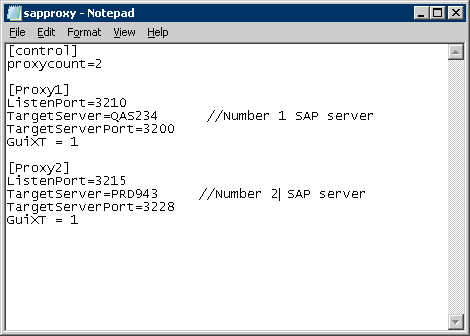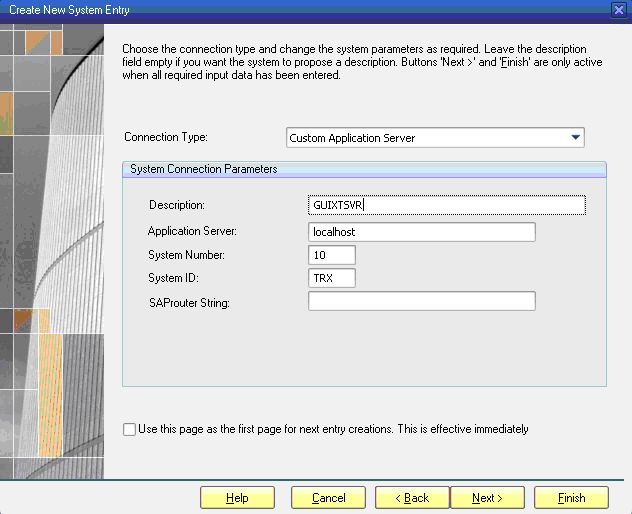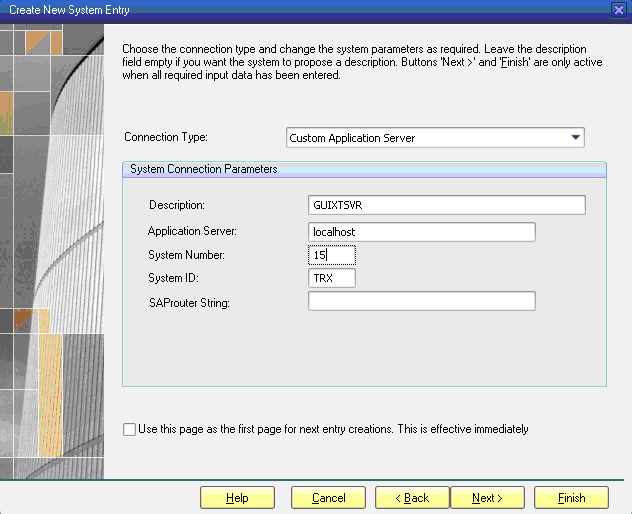Entering multiple SAP instances in the sapproxy.ini file.
In the case of multiple SAP instances, the sapproxy.ini file must contain an entry for each instance. Each entry must contain the relevant information for that particular SAP instance. An example of a sapproxy.ini file where there are multiple SAP instances is shown below:

When you have multiple SAP systems in the sapproxy, the [Proxy] data is as follows:
- ListenPort
-
The port on which the Liquid UI Server aka GuiXT Server will listen for traffic.
- TargetServer
-
The SAP server IP address or name
- TargetServerPort
-
The port on which the specified SAP application server will listen for incoming traffic.
- GuiXT
-
The SAP server IP address or name
- options
-
The SAP server IP address or name
The sapproxy.ini file now contains two entries - one for each SAP instance. Note that the port information and the server name information are unique. This is important - there cannot be two identically-named instances in the sapproxy.ini file. It is important to note that the proxy count in the [Control] section must equal the number of SAP instances as well. For multiple instances of SAP, it is necessary to create a unique connection for each in the SAP Logon Pad as well. Each connection instance will point to the same server, but will have a unique system number. In the following screenshot, the server GUIXTSVR points to the local system, using the system number '10':

In the following example, the server is the same, but the system number has changed to '15'. This denotes a separate instance of the SAP server.





